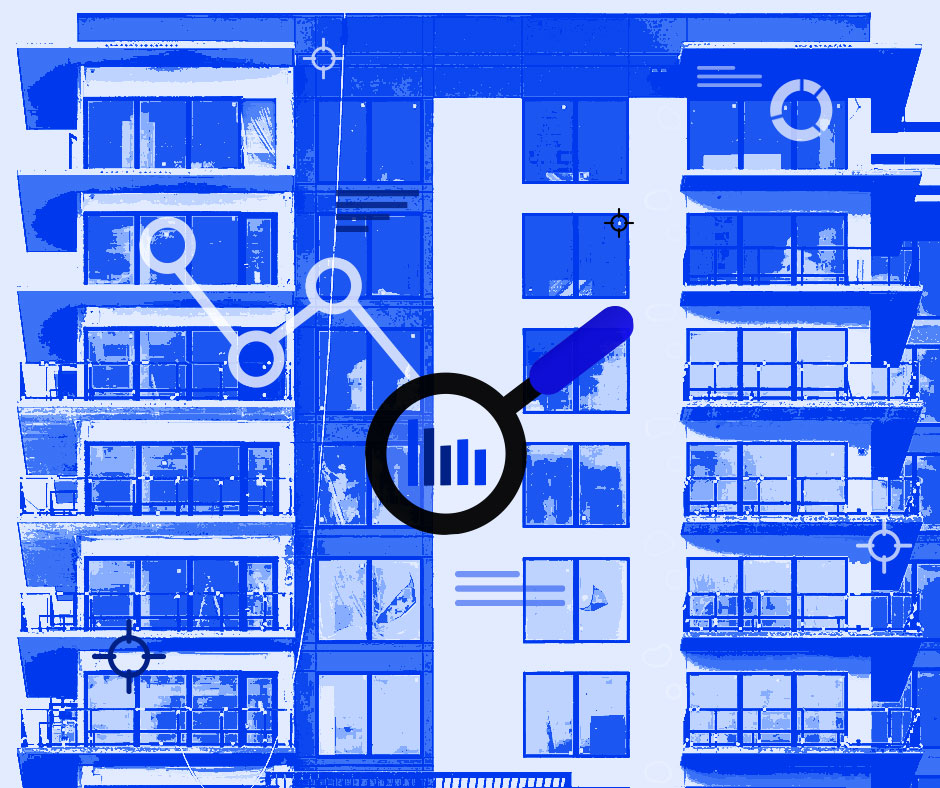
The luxury condominium tower promised to be an impressive sight on the skyline, visible from miles away. The façade of the structure would signal the premium living experience future residents would enjoy. However, the project hit a snag when the developer found signs that the building was suffering from water infiltration and masonry defects. The owner calculated that it would take three people working on a swing stage about three months to inspect every inch of the façade. That delay could be a serious issue for residents who had pre-purchased the condos, potentially costing the developer critical profit—not to mention unexpected budget overruns.
Considerations are more than aesthetic: The façade of a building plays a key role in enabling energy efficiency, protecting against the elements and tying the design of the exterior to that of the interior for a cohesive experience. Signs of a façade issue can start small, such as a crack or leak several stories up. As buildings in many metropolitan and suburban areas grow in height, the façade installation process has become increasingly difficult.
It’s inherently challenging to inspect the façade on a building that is hundreds of feet high. The physical challenge is undeniable; using a swing stage could take many months, as inspectors must review every detail, joint by joint, window by window, stone by stone, and brick by brick. Inspections of the entire building system can be limited by this process, as inspectors can only access one portion of the building façade at a time. Other common inspection processes, such as inspecting from indoors or balconies, using ladders or looking at the façade from the ground, are equally onerous.
Avoiding rework and the effect of compounding errors will save a project from typical budget and timeline issues. With the façade, the costs associated with rework typically encompass two key phases of construction: installation of the substrate layer of the façade (framing, sheathing, waterproofing, flashing, expansion and control joints) or installation of the finish materials (masonry, metal panels, curtainwall systems, etc.). And in the case of curtainwall façades, rework stems from improperly installed panels or insufficient waterproofing around the panels. (And, when defects aren’t discovered until months or years after the building is completed, remediation can extend to mitigating the effects of water leaks or thermal leakage. Rework at this stage can be the worst of all, as it impacts building occupants and can trigger legal action.)
It is critical to detect errors quickly and reduce extra costs by enabling the subcontractors already on site to fix the problem—for example, ensuring that embeds on a steel or concrete structure are placed accurately (both horizontally and vertically) before the glazier comes on site.
Other errors commonly seen during façade construction include:
- A weep system that is plugged or missing.
- Incorrect embed locations.
- Air barrier coverage that is damaged.
- A gasket that’s too short, causing water infiltration in the building.
- Sealant joints that are installed out of sequence or in the wrong place.
- Flashing that is installed out of sequence or in the wrong orientation.
- Penetrations that are installed with poor workmanship or at the interface of two or more trades.
How DCV for the Building’s Façade Can Help
SiteAware’s Digital Construction Verification (DCV) platform for the building envelope verifies every layer of the façade while work is underway, avoiding costly rework scenarios. The platform automatically generates element-level observations of the façade for project teams so they can correct workmanship, work that’s out of sequence and other mistakes in real time—before they are concealed by subsequent layers. SiteAware DCV inspects the system as a whole, not as a collection of vertical snapshots of the building, and documents the as-built condition of substrate layers and final product at completion. The verification DCV offers does not disrupt trade production and alleviates the safety concern of putting inspectors on the side of the building. The turnkey SiteAware DCV process is efficient, without the waste and cost of site visits by inspection consultants.
The owner of the luxury condominiums previously mentioned did see a successful outcome, fortunately. SiteAware was brought in and was able to complete the inspection in mere days, providing element-level observations along the way, which enabled the owner to implement fixes in real time. SiteAware also generated comprehensive as-builts, documenting for the owner both the issues identified and the state of the façade after they were fixed.